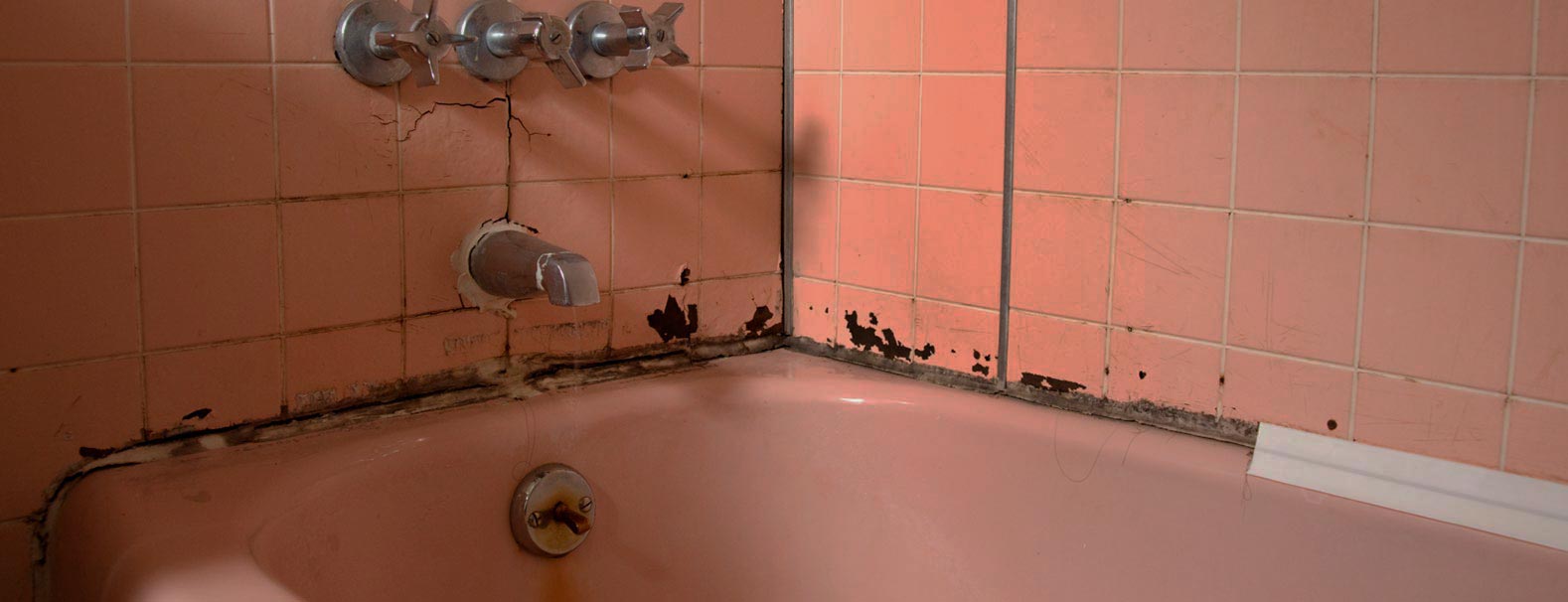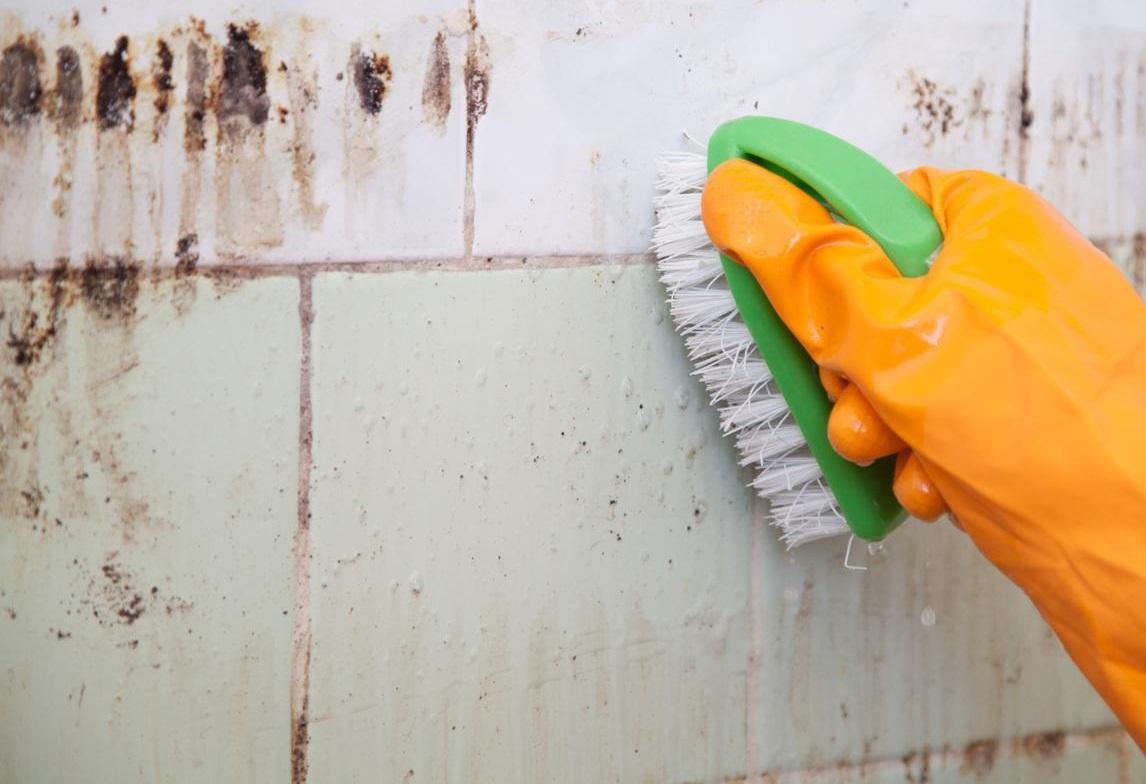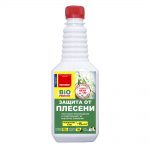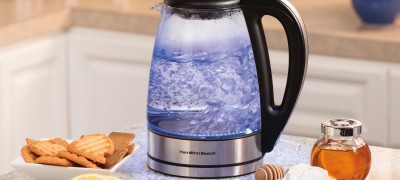How to remove mold in the bathroom
Hot steam, constant humidity are factors that provoke the development of microorganisms on the tile, in the seams. It is useless to clean the room with conventional means in such a situation. Experts will tell you how to remove the fungus in the bathroom so that pathogenic spores do not destroy the coatings and do not affect the inhabitants of the apartment. There are many ways to clean tiled floors, corners on the ceiling, tile joints on the walls. If folk remedies do not help, they resort to special means to eliminate fungi.

Where does the mold come from?
The plumbing unit is considered a “wet zone”. People come there to have morning and evening exercise, wash, wash clothes. Regular use of water creates a special atmosphere in which fungus develops, all kinds of mold grows.

It is difficult to get rid of microflora when the humidity is constantly high. Factors that make it difficult to eliminate fungal infections:
- ineffective ventilation;
- incorrectly adjusted heating system (condensation forms);
- the use of low-quality tile glue;
- insufficient sealing of interpanel seams;
- poor sealing of the bathroom floor, tile grout;
- plumbing problems, pipe leaks.
Note! At the first signs of darkening, it is necessary to take measures to eliminate the cause of mold growth.

Types of mold
The intercellular structure of microorganisms is of different shades, the most common types are:
- The black fungus Wallemia belongs to the actively multiplying, but harmless to health group of mold crops. It is difficult to remove from hard-to-reach places, it grows into gel sealants, acrylic putties.
- The biodestructor that develops on plant fibers is called "chaetomium globosum" in Latin. First, a white bloom appears, then the shade becomes olive, then black and gray. Cells of color destroy building materials containing cellulose: wallpaper, wood, drywall, wood-board materials.
- All Herbarum species are capable of nesting on mineral and plant materials, on any surface. Colonies form olive or brown fungal bloom, from which ceramic tiles, cladding, paint and varnish coverings are exfoliated.
- Blue develops on wood fibers, modifies their structure, irrevocably reduces the strength of the floors. The appearance of a blue tint provokes stagnant air, a population of putrefactive bacteria multiplies rapidly.
Important! Black mold should not be allowed to spread, it can be dangerous.

Where can she appear
If there are no traces of plaque in sight, it is worth looking for mold in remote places. You should periodically remove everything from under the bath, remove the protective screen. Populations should be sought in hidden areas of the bathroom. Blackness is often found:
- on the lower part of the wall under the tap;
- in the corners under the bathroom;
- gaps between tiles, where it is difficult to wipe off dirt;
- under facing slabs, skirting boards, if they do not fit tightly to the surface;
- in cups where toothbrushes and toothpaste are stored;
- on the ceiling under a stretch or false ceiling.

Disputes, having entered the room from ventilation, with clothes, shoes, all kinds of cleaning items, remain viable for a long time. Pathogens do not die even at low temperatures and low humidity. When favorable conditions arise, they multiply rapidly.
For reference. It is impossible to completely get rid of microorganisms; it is important not to create conditions for the development of bacteria and spores.

Why is mold in the bathroom dangerous?
Getting rid of mildew will help keep you healthy. Most mold cultures provoke the manifestation of all kinds of allergies: skin, lung, and inflammation of the mucous membranes. With a high concentration of fungal spores, severe complications are possible, diseases of the respiratory system, skin, nasopharynx, and eyes occur.

With a long stay in a room affected by fungal infections, intoxication of the body manifests itself. It can be difficult to determine the nature of the appearance of nausea, abdominal pain. The most toxic types of fungal mold negatively affect the functioning of the liver, kidneys, and gastrointestinal tract. The fungus is dangerous for dwellers with reduced immunity.

The fungus destroys the cladding on the walls, floor, ceiling, it is carried out regularly to carry out repairs, to look for ways to clean surfaces from plaque that penetrates to great depths. It is necessary to remove the primer, repair concrete, brick or block masonry.
Note! Mold culture "chaetomium globosum" is the most dangerous for allergy sufferers, children and the elderly. With frequent contact, it provokes rhinitis, respiratory manifestations.

How to get rid of mold
Wash off plaque with traditional detergents. It is necessary to clean surfaces with antiseptic solutions or preparations. Repeated multiplication of microorganisms after mechanical removal cannot be avoided, spores are invisible in small quantities, but at high humidity and temperature they will grow into a colony.

It is impossible to remove mold in the bathroom with soap, it is an additional breeding ground for spores. The fungus will develop even more actively. It is better to use special compounds or household chemicals, food acids and alkalis. Particular attention should be paid to cleaning the joints of walls and ceilings, floors, fixing points for mixers, plumbing fixtures.

Purchased funds
It is convenient to remove mold deposits with special tools for removing mold in the bathroom. Manufacturers offer a large selection of microflora killers. It is worth paying attention to some formulations that can be used at home.

Sprays to get rid of mold spots:
- Cillit Bang with the content of chlorine components will help to clean tiles, seams. The product is applied for 20 minutes, then the treated surfaces must be washed off with plenty of water.
- Dec produced by "Neochim" destroys all types of mold crops, including fungi. The drug is applied for 2–4 hours, then the bathroom must be washed well.
- Bagi "Anti-mold" with hypochlorite is intended for any finishing materials. You can wipe off plastic, tiles, paint, cast iron pipes.
- Prosept Bath Fungi with chlorine is sprayed in well-ventilated areas. Leave it overnight or for a whole day. Then the surfaces are deeply cleaned.
- The line of Mellerud products of various toxicity must be chosen according to the type of pathogen. The substance is applied for 15–20 minutes, then the treated areas are well rinsed.
Important! All products must be removed with plenty of water. When working with sprays, protect your hands with gloves.
Folk remedies
When the spots are small, you can use substances that are found in every home. It is desirable to carry out processing regularly. In case of strong bloom, the mixture is applied after drying again up to 5 times. Among the folk remedies for yellow and black plaque are:
- Hydrogen peroxide - problem areas are moistened with a pharmacy solution.
- Boric acid is diluted 1:10, the plaque is preliminarily cleaned off mechanically. The drill is bred similarly.
- Ammonia is diluted in the proportion: 1 tbsp. l. for 2 glasses of water. The composition is applied to the seams, left for 30 minutes, then washed off.
- Tea tree oil has anti-fungal properties, 1 tsp is added to 500 ml of water. essential oil. The mixture is left on the dirt until dry, it does not need to be washed off.
- Soda is mixed with vinegar: 5 liters. warm water add 150 g of soda and 100 g of vinegar essence. The foam is applied to the affected surfaces. This treatment is recommended for repair work.
- Copper sulfate is dissolved in warm water (100 g of the preparation is added to 10 liters), the plaster layer is soaked before applying masonry glue. Then the walls are mechanically cleaned.
- Chlorine bleach or other cleanser is diluted 1: 1 with water. Spray the solution with a spray bottle. After 3 hours of exposure, wash off.
For reference. It is better to eliminate blackness when carrying out repair work, then the likelihood of fungal growth will decrease.

Mechanical way to remove fungus
It is necessary to remove plaque in any case: before or after treatment. To remove mold in the bathroom with your own hands, use steel brushes, a sandpaper, a spatula, a sharp knife or a grinding attachment for a drill. The surfaces are preliminarily moistened so that the spores do not scatter. If the germination is deep, the plaster layer is removed, the cracks are cut. It is important to thoroughly clean the entire surface.

How to prevent the appearance
It is recommended to avoid constant high humidity. For this purpose, fans are installed in the air duct system, which quickly remove vapors after taking a bath.

When drying clothes, after water procedures, it is advisable to keep the doors to the bathroom ajar. An installed heater or underfloor heating will help to quickly dry the room.

The development of the fungus with normal ventilation is inhibited, volatile spores do not have time to settle on the surface, they are carried away by streams of warm air. Regular preventive treatment with safe solutions will help: peroxide, tea tree oil. Microorganisms do not develop in an acidic environment, regular treatment with ordinary table vinegar is also effective.

It is easier to get rid of the fungus in the initial stages of colony growth. If you ensure good air circulation and do not dry the laundry in the bathroom, the spores present in the room will not develop. In small numbers, microorganisms are practically invisible.
Video: how to get rid of mold and mildew in the bathroom












